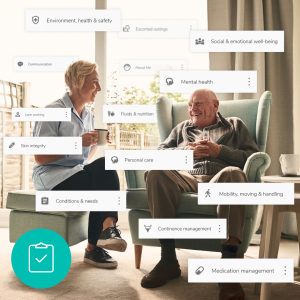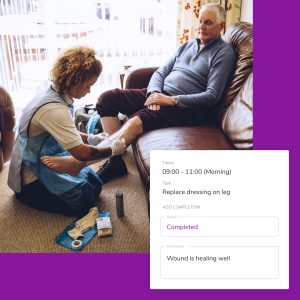The continuation of the Care Quality Commission (CQC) crisis shows no signs of slowing. With the recent resignation of Chief Executive Sir Julian Hartley, uncertainty continues to ripple through the organisation and its impact will undoubtedly be felt across the social care sector for some time.
Last week CareLineLive attended the CMM Insight iCG Annual Conference. While the event was highly insightful, the update from CQC’s Rob Assall, Network Director of Operations (North), raised several concerns.
It became clear that the Single Assessment Framework is still struggling to find its footing. With multiple versions already in circulation, there is a growing call for simplification and consistency. Mr Assall’s remarks painted a troubling picture for both existing providers and those attempting to register new services under the regulator’s current system.
The central theme of the talk was collaboration. A new CQC consultation has now been launched, closing on 11 December 2025 and many in the sector must hope that this will finally act as a springboard for meaningful reform, enabling assessment and inspection processes that truly meet the needs of adult social care and those who depend on its services.
The Single Assessment Framework: Industry feedback
CQC appears to be listening. The number of quality statements may soon drop from 34 to around 20-25 and much of the duplication is expected to be removed. Regulation, the fundamental standards and key questions will not change. While this simplification is welcome, it remains to be seen whether these changes will go far enough to restore confidence among providers and stakeholders.
The current state of play
What is certain is that the CQC is focusing heavily on culture, co-production between CQC and providers, implementing and embedding sector expertise and driving improvement through data analysis, both in terms of internal staff satisfaction and the external experience of providers and people using services.
Mr Assall highlighted that the CQC’s vision, values and the CQC Way remain central to the organisation’s identity, with the key objectives of:
- Driving up the volume and quality of inspections
- Streamlining and enhancing key regulatory processes
These objectives will be achieved by:
- Determining what good looks like, in collaboration with people, staff and stakeholders
- Redesigning the assessment framework
- Rebuilding the regulatory platforms that support their work
- Aligning their operational workforce into sectors
Acknowledging the extensive challenges created by the Single Assessment Framework (SAF), technical issues with the new IT system and the loss of many experienced inspectors, CQC seems committed to addressing its structural and operational flaws. It was somewhat reassuring to hear that there is now an active commitment to fixing what has become a very deep hole. However, there also appears to be a shift towards reinstating elements of the inspection criteria used before the introduction of the Single Assessment Framework.
It is imperative that providers are ready for a potential reversal to previous ways of working, although, there was an emphasis on the fact that the Single Assessment Framework ‘will stay for now,’ and there will be no significant changes before April 2026.
What’s changing?
Developing current frameworks and guidance for assessing providers by:
- Re-introducing rating characteristics – To reiterate, providers must be prepared to revert to previous ways of working, as this is a real possibility!
- Replacing quality statements with assessment questions
- Developing sector specific frameworks
- Simplifying the content of the frameworks
Improving how providers are assessed and rated:
- Making judgements at key question level
- Potential changes to how NHS trusts are rated
- Re-introducing an overall quality rating for each NHS trust
- Introducing trust-level ratings for all 5 key questions
- Whether to remove location-level ratings
Key areas of focus
- Leadership and expertise
- Registration
- Reviewing the inspection framework
- Inspection and technology
- Independent IT review
- Working in partnership
Registration: Strict criteria
Registering a service has never been straightforward and providers should be aware that applications must be fully completed with all criteria addressed accurately. Any missing information will result in a rejected application. Errors may be as small as an incorrect postcode, typographical mistakes or omissions of required information at the application stage or in later requests. At present, nearly ninety per cent of applications are rejected because they are incomplete.
Provider Information Return (PIR)
A request for your Provider Information Return (PIR) does not necessarily indicate that an inspection is imminent. This is an annual requirement, and it is advisable to keep it updated regularly. Maintaining it continuously will make the process far easier and less time consuming in the long run.
Can collaboration save the regulator?
The CQC’s renewed focus on collaboration and cultural change is encouraging, but actions will speak louder than words. The sector has heard promises of reform before, what is now required is consistency, transparency and a genuine willingness to listen.
If the CQC can deliver a more stable, efficient and sector-sensitive regulatory model, there may yet be an opportunity to rebuild trust. However, if the latest consultation simply introduces another layer of bureaucracy, confidence in the regulator is likely to decline even further.
The coming months will be critical. Collaboration must move beyond rhetoric and result in tangible improvements that genuinely support both those providing and those relying on adult social care services.




